

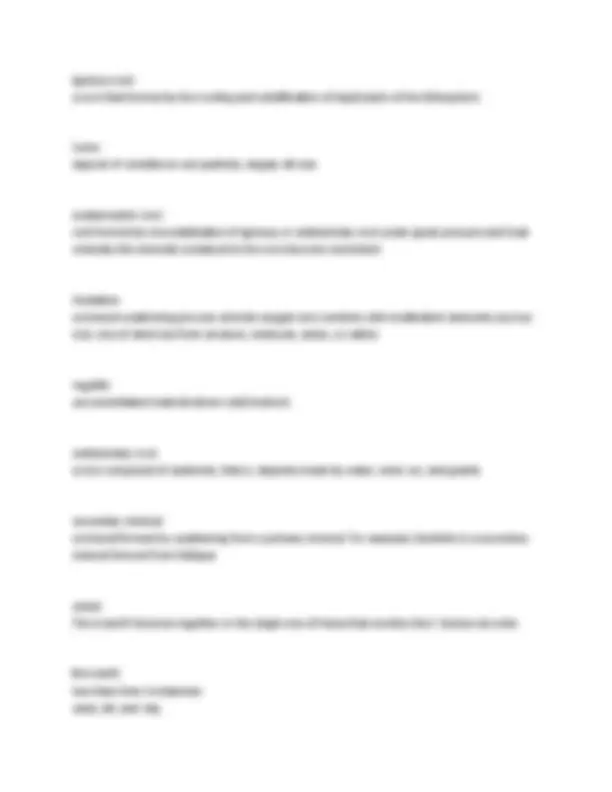


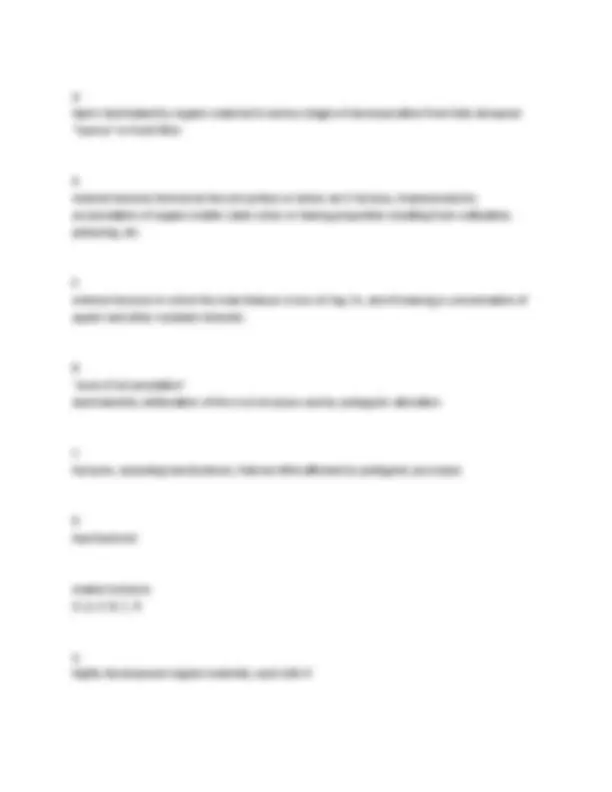

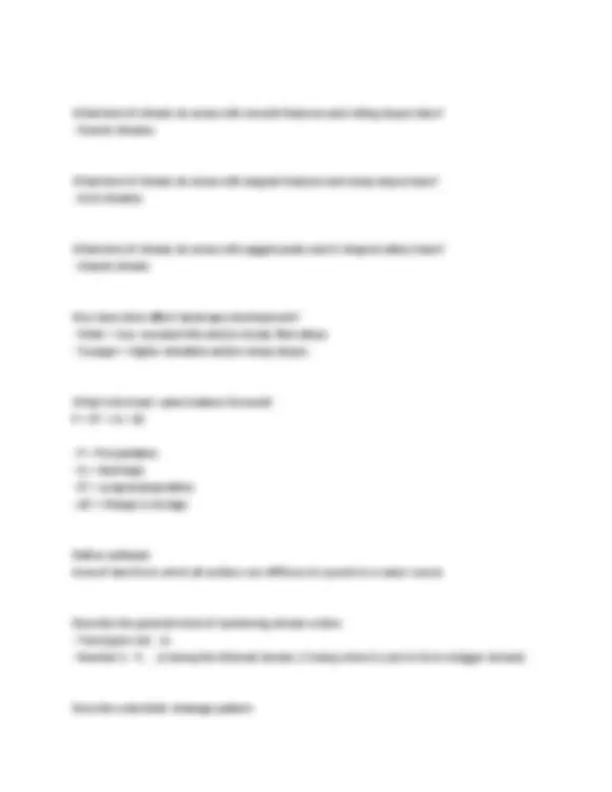
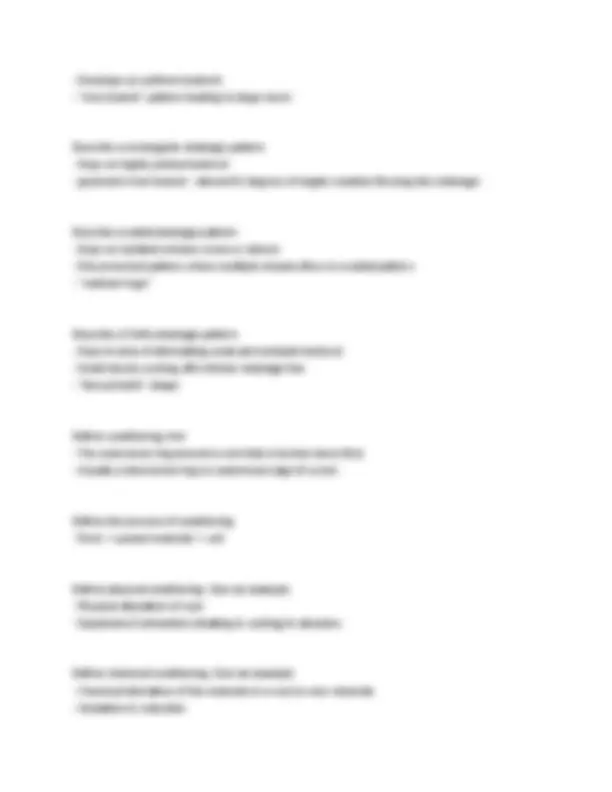

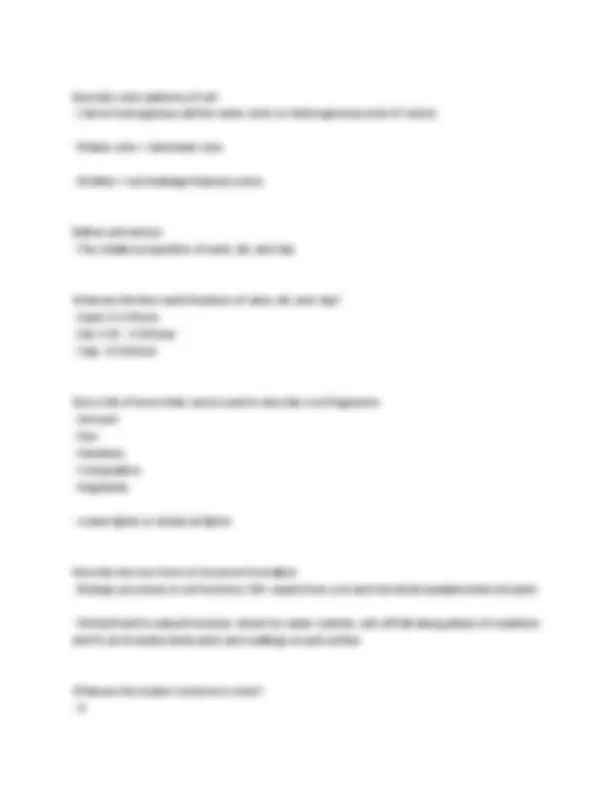
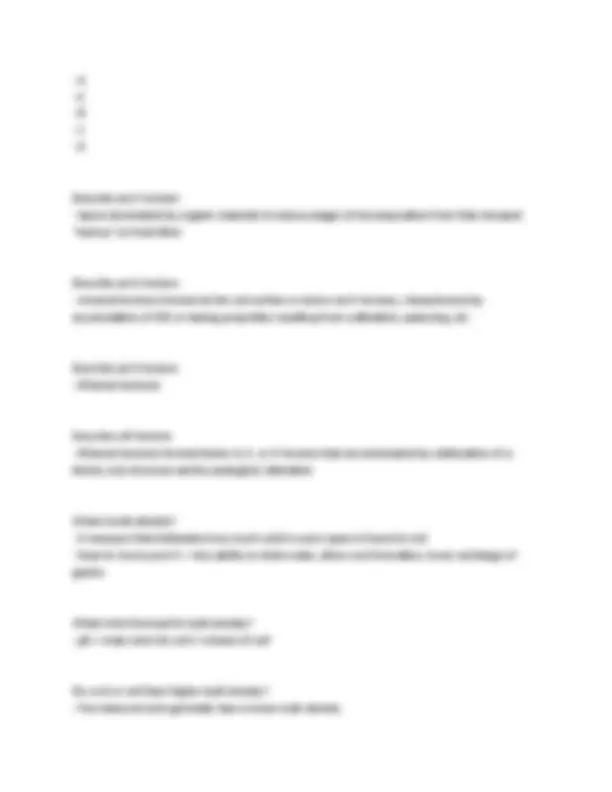
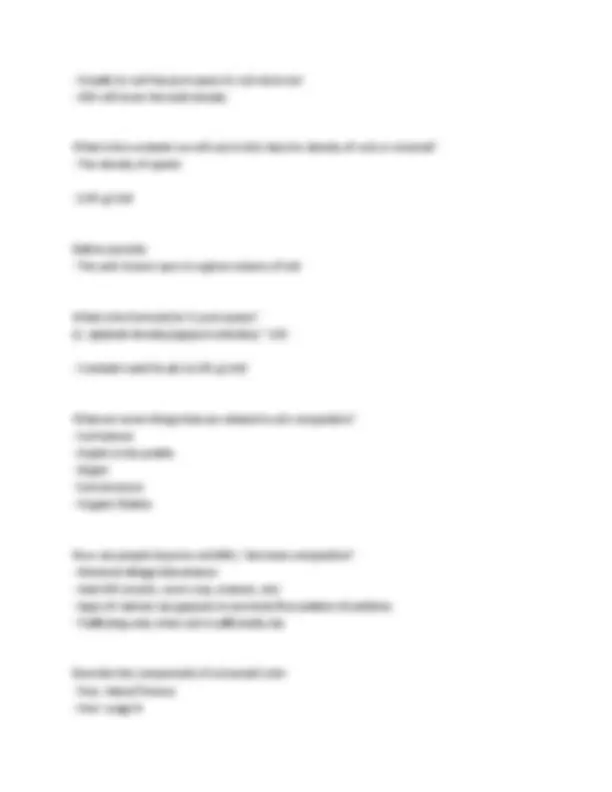

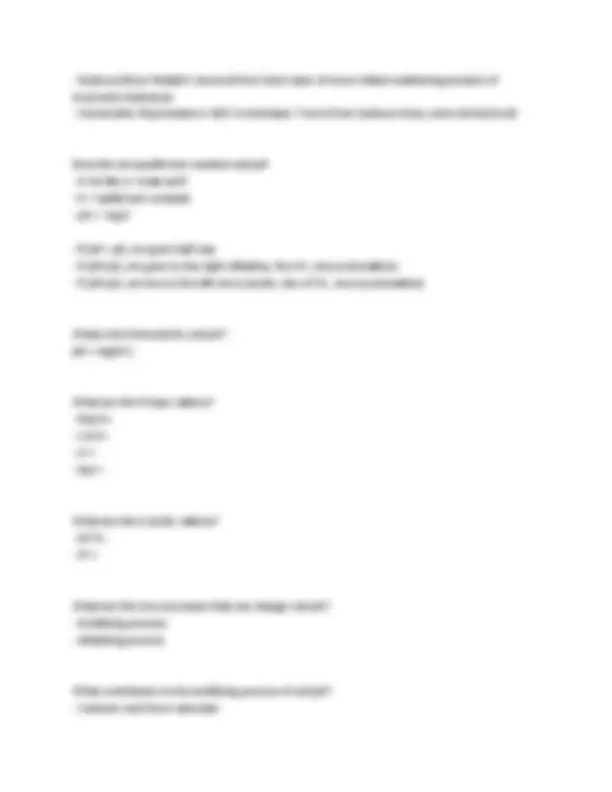

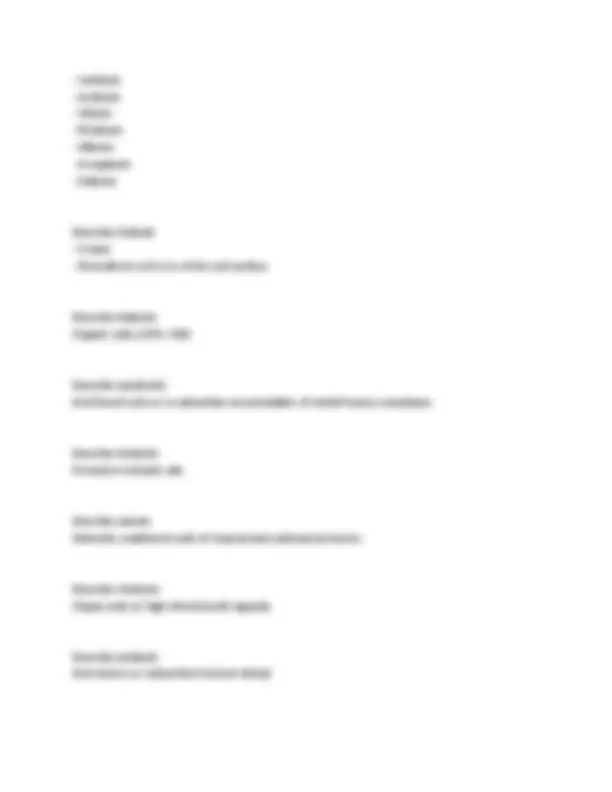
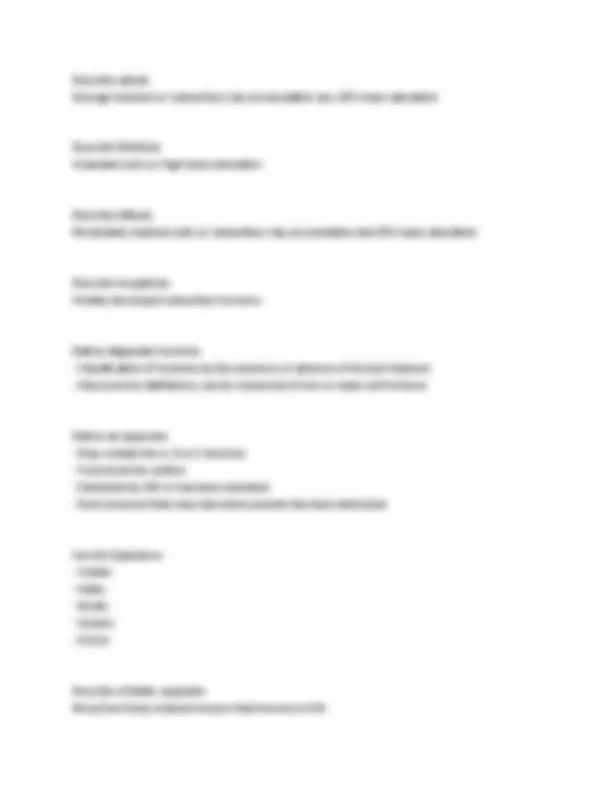





Study with the several resources on Docsity

Earn points by helping other students or get them with a premium plan


Prepare for your exams
Study with the several resources on Docsity

Earn points to download
Earn points by helping other students or get them with a premium plan
Community
Ask the community for help and clear up your study doubts
Discover the best universities in your country according to Docsity users
Free resources
Download our free guides on studying techniques, anxiety management strategies, and thesis advice from Docsity tutors
CRSS(FANR) 3060 Exam 1 Latest 2024/2025 (Answered) Complete 100% name the six physiographic regions of Georgia Valley and Ridge, Blue Ridge, Piedmont, Sand Hills, Southern Coastal Plain, and Flatwoods what is the oldest, most mature landscape of the Southeast? Piedmont hydrology equation P = ET + Q + change in S breakdown of hydrology equation Precipitation, Evaporation and Transpiration, water discharge, Storage of water in soil
Typology: Exams
1 / 28

This page cannot be seen from the preview
Don't miss anything!





















name the six physiographic regions of Georgia Valley and Ridge, Blue Ridge, Piedmont, Sand Hills, Southern Coastal Plain, and Flatwoods what is the oldest, most mature landscape of the Southeast? Piedmont hydrology equation P = ET + Q + change in S breakdown of hydrology equation Precipitation, Evaporation and Transpiration, water discharge, Storage of water in soil soil the layer(s) of generally loose mineral and/or organic material that are affected by physical, chemical, and/or or biological processes at or near the planetary surface, and usually hold liquids, gases and biota and support plant. soil functions Plant growth media, regulate water supply, recycle raw materials, habitat for soil organisms, engineering medium the four processes additions, losses, transformations, translocations additions
largely humus additions to the A horizon losses losses from the soil profile including soluble minerals during weathering and surface erosion transformations via chemical or physical modification such as primary minerals to secondary minerals due to weathering reactions or humus synthesis translocations examples include clay and iron from the A and E horizons into the B. Transport of B and C horizon material to the surface by termites, ants, or burrowing rodents. how many feet in an acre? 43,560 sq feet how many hectare in an acre? .4047 ha pedogenesis describes the formation and development of the soil profile pedon the three-dimensional body of soil used as the soil base of reference shape of silicate tetrahedron
Igneous rock a rock that formed by the cooling and solidification of liquid parts of the lithosphere Loess deposit of windblown soil particles, largely silt size metamorphic rock rock formed by recrystallization of igneous or sedimentary rock under great pressure and heat whereby the minerals contained in the rock become reoriented Oxidation a mineral weathering process wherein oxygen ions combine with multivalent elements such as iron, loss of electrons from an atom, molecule, anion, or cation regolith unconsolidated material above solid bedrock sedimentary rock a rock composed of sediment, that is, deposits made by water, wind, ice, and gravity secondary mineral a mineral formed by weathering from a primary mineral. For example, Kaolinite is a secondary mineral formed from feldspar. solum The A and B horizons together or the single one of these that overlies the C horizon at a site fine earth less than 2mm in diameter sand, silt, and clay
major role in plant growth course earth greater than 2mm in diameter gravel, stones sand particles 2 to 0.05mm silt particles 0.05-0.002 mm. Too small to see without a microscope or to feel individually. Feels smooth, but not sticky, even when wet. Has a floury feel. clay particles less than 0.002mm in diameter soil texture an expression of the relative amounts or percentages of sand, silt, and clay. Permanent property. soil structure the arrangement of soil particles porosity the volume occupied in soil by pores good number is 50% red = iron is oxidized, not hydrated
reverse of immobilization, wherein organic forms of nutrients in organic materials are converted to the inorganic forms by soil organisms during decomposition folistic a more or less freely drained horizon that formed in organic materials histic a saturated horizon that formed in organic materials mollic Thick, dark colored, high base saturation, strong structure ochric a more or less minimally developed surface horizon, typically thin or light colored, that does not meet the criteria for any other epipedon umbric a thick, dark-colored, humus-rich horizon with low base status albic horizon light-colored, leached subsoil horizon andic soil properties unique soil properties associated with materials that are rich in volcanic glass or poorly crystalline minerals Aquic conditions saturation in the soil to the extent that it results in the depletion of oxygen
argillic horizon subsoil horizon with an illuvial accumulation of clay calcic horizon subsoil horizon with an illuvial accumulation of calcium carbonate(CaCO3) cambic horizon subsoil horizon with minimal development kandic horizon subsoil horizon with low nutrient-holding capacity and significantly more clay than the overlaying surface layer oxic horizon subsoil horizon that is extremely weathered and has a very low nutrient-holding capacity spodic horizon subsoil horizon with an illuvial accumulation of organic matter in complex with aluminum and also iron type of deposit alluvium, collovium, residuum, eolian, glacial deposits, volcanic ash five factors of soil formation climate, organisms, relief, parent material, time CLORPT how long does it take for soil to form? 100 years for 1" of soil
e organic material of intermediate decomposition; used with O i slightly decomposed OM; used with O b buried genetic horizon g strong gleying; dominant color has chroma of 2 or less. wet horizon h illuvial accumulation of OM; used with B p plowing; used only with A r weathered or soft bedrock; only used with C t illuvial accumulation of silicate w development of color or structure; used with B horizon f permanently frozen soil
k accumulation of carbonates m cementation or induration; used with symbol for cementing material munsell color system HUE, VALUE, CHROMA List five soil functions
What kind of climate do areas with smooth features and rolling slopes have?
Name the groups of weathering of minerals and give an example
Describe an O horizon